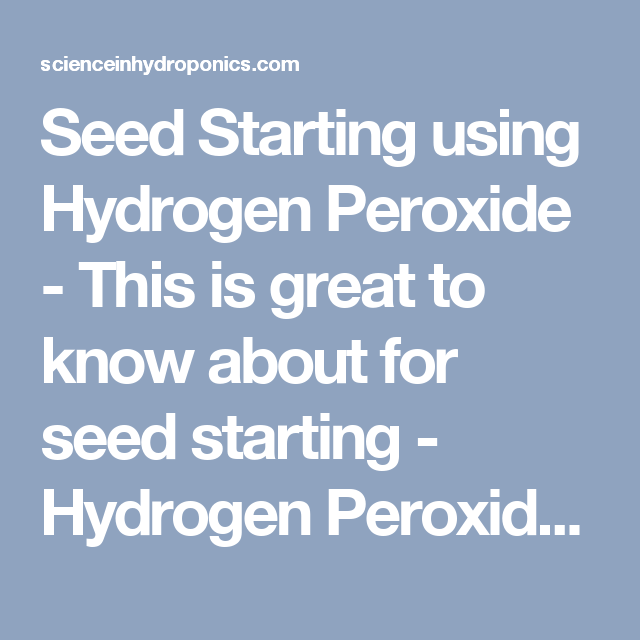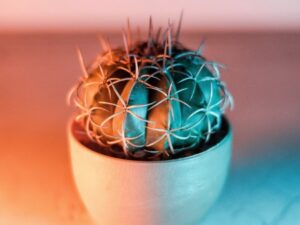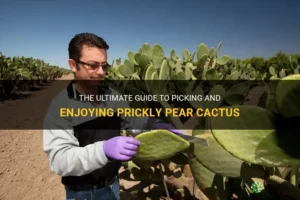The gardening community continually seeks ways to enhance the germination rate and overall viability of seeds. An increasingly popular method is the soaking of seeds in hydrogen peroxide. This intriguing technique not only serves a functional purpose but also adds an aesthetic element to the seed preparation process. Understanding the duration for soaking seeds in hydrogen peroxide can yield significant benefits, leading to robust and vibrant plant life.
Hydrogen peroxide, with its chemical formula H₂O₂, is a powerful oxidizing agent that can eradicate pathogens, facilitate oxygen transfer, and promote faster germination. This multifaceted compound poses both advantages and drawbacks in seed treatment. Striking the right balance in soaking time is paramount; too little exposure may not suffice, while excessive soaking can compromise seed integrity. The delicate dance between these factors is essential for achieving the best results. Herein lies the crux of the issue: what is the optimal soaking duration?
Embarking on this journey requires a clear understanding of the variables at play. Numerous factors influence the recommended soaking time, including seed type, hydrogen peroxide concentration, and desired outcomes. Let’s delve deeper into this captivating aspect.
Understanding the Ideal Soaking Duration
It’s crucial to ascertain how long to soak seeds in hydrogen peroxide. Most recommendations suggest a soaking duration of 30 minutes to 1 hour, depending on the specific seed species and the concentration of hydrogen peroxide used. Typically, a 3% solution is employed for general seed soaking. This concentration is potent enough to eliminate unwanted bacteria yet gentle enough to preserve the seed coat.
Seeds with tougher exteriors, such as beans or peas, may benefit from the upper end of the soaking spectrum. In contrast, seeds with coatings that are more delicate, such as those from certain wildflowers, may only require a 15 to 30-minute soak. Such nuances emphasize the necessity for research into the specific requirements of each seed type.
Moreover, the soaking duration impacts the pace of germination. The seeds that undergo an appropriate hydrogen peroxide soak frequently exhibit accelerated growth, increasing their chances of successful establishment. The oxygenation provided by the hydrogen peroxide enhances cellular respiration, thereby jumpstarting the germination processes.
The Benefits of Hydrogen Peroxide Soaking
Soaking seeds in hydrogen peroxide is not solely about hastening germination. The technique offers myriad benefits that elevate it beyond a simple preparatory step. Perhaps one of the most significant advantages is the reduction of seedborne pathogens. Seeds can harbor a plethora of pathogens that may jeopardize plant health upon germination. These pathogens can lead to rot or damping-off disease, which are detrimental in the early stages of a plant’s life. The antibacterial properties of hydrogen peroxide effectively neutralize these threats, ensuring that the seeds have a healthy start.
Additionally, hydrogen peroxide can aid in leaching out any residual chemicals or substances that may be present on the seed coating. This is particularly appealing to organic gardeners who seek to maintain a chemical-free growing environment. The aesthetically appealing nature of healthy seedlings is a testament to the efficacy of this technique, making your garden not only vibrant but also a sanctuary for plant enthusiasts.
Discovering the Aesthetic Appeal
As one immerses in the world of seed soaking, the visual aspect becomes a compelling factor. Observing the transformation of dry, seemingly lifeless seeds as they undergo soaking in hydrogen peroxide is a fascinating process. Within moments, the seeds begin to swell slightly, signaling the initiation of hydration and respiratory activity. This aesthetic appeal captivates both novice and experienced gardeners alike, painting an intriguing picture of potential growth.
Furthermore, noting the differences in germination rates and seedling vigor creates a beautiful juxtaposition. Those seeds that receive hydrogen peroxide treatment often outshine their untreated counterparts, exhibiting more robust growth and vibrant coloration. This transformation isn’t simply about practicality; it adds a visual narrative to the entire gardening process, infusing it with excitement and anticipation.
Experimentation and Adaptation
While the aforementioned guidelines serve as a robust foundation for seed soaking practices, they invite further exploration. Each gardener may find that slight deviations in soaking duration yield disparate results. Documenting these variations could foster a personal database of experiences, enhancing future planting endeavors. Tailoring the soaking time to specific seed types contributes not only to successful germination but also personal satisfaction in the art of gardening.
Ultimately, the nuances of hydrogen peroxide seed soaking reveal a captivating journey in plant propagation. The balance of science and aesthetics creates a rich tapestry, inviting individuals to engage in this widely-practiced technique. By carefully determining the ideal duration to soak seeds in hydrogen peroxide, gardeners can set the stage for flourishing plant life, resulting in a garden that celebrates growth, resilience, and beauty.





Leave a Comment